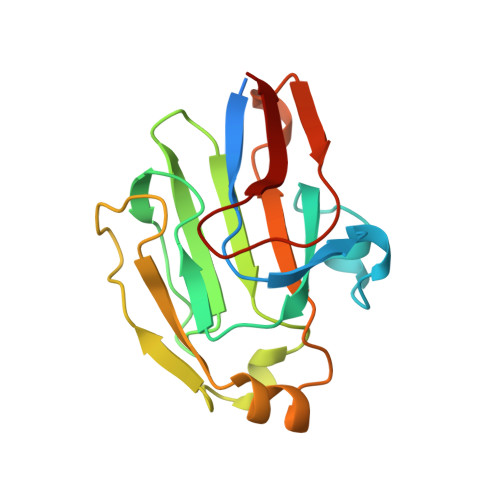Structural studies of the Escherichia coli signal transducing protein IIAGlc: implications for target recognition.
Feese, M.D., Comolli, L., Meadow, N.D., Roseman, S., Remington, S.J.(1997) Biochemistry 36: 16087-16096
- PubMed: 9405042
- DOI: https://doi.org/10.1021/bi971999e
- Primary Citation of Related Structures:
1F3Z, 2F3G - PubMed Abstract:
In Escherichia coli, the glucose-specific phosphocarrier protein of the phosphotransferase system (PTS), IIAGlc (IIIGlc in older literature), is also the central regulatory protein of the PTS. Depending upon its state of phosphorylation, IIAGlc binds to a number of different proteins that display no apparent sequence homology. Previous structural studies suggested that nonspecific hydrophobic interactions, specific salt bridges, and an intermolecular Zn(II) binding site contribute to the wide latitude in IIAGlc binding sites. Two new crystal forms of IIAGlc have been solved at high resolution, and the models were compared to those previously studied. The major intermolecular contacts in the crystals differ in detail, but all involve the hydrophobic active site of IIAGlc interacting with a hydrophobic patch on a neighbor and all are shown to be surprisingly similar to the physiologically relevant regulatory interaction of IIAGlc with glycerol kinase. In two crystal forms, a helix on one molecule interacts with the face of another, while in the other crystal form, the primary crystal contact consists of a strand of beta-sheet that contributes to an intermolecular Zn(II) binding site with tetrahedral ligation identical to that of the zinc peptidase thermolysin. Thus, relatively nonspecific hydrophobic interactions combined with specific salt bridges and an intermolecular cation binding site (cation-promoted association) permit a regulatory protein to bind to target proteins that have little or no sequence or structural homology with one another. It is suggested that signal transduction by IIAGlc is a binary switch in which phosphorylation at the active site directly controls binding to target molecules.
- Institute of Molecular Biology and Departments of Physics and Chemistry, University of Oregon, Eugene, Oregon 97403, USA.
Organizational Affiliation:
















